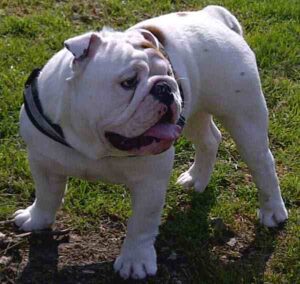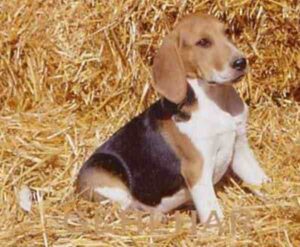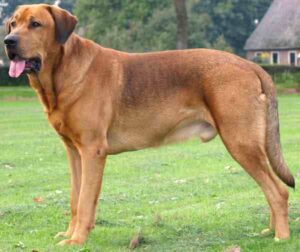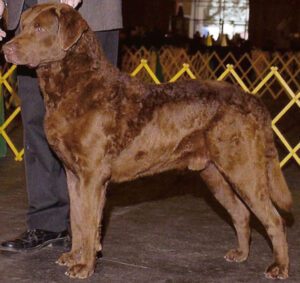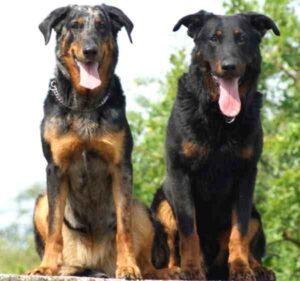The Transmontano Cattle dog is a giant breed of dog of molosser type. It is also known as Cão de Gado Transmontano and Transmontano Mastiffs. It is primarily a working dog and used as a livestock guardian.
The breed was originated in the region of Trás-os-Montes e Alto Douro Province, Portugal, it is a rare breed mostly confined to this area. The primary function of these dogs is flock and herd protection, and their success is interlinked with the welfare of the flock and the presence of wolves, particularly.
Although they are a regional breed, their wolf-defense capacity has led to limited experimental importation elsewhere.
It is believed that the dog’s roots come from the Tibetan Mastiff as well as a Portuguese cattle dog known as the Rafeiro do Alentejo. The dog also shares some similarities with the short-haired Estrela Mountain Dog.[1]
In 1995 the breed was still exclusive to Portugal, but now the breed has been imported to Oregon, USA to be part of an experiment to document bigger breeds and their role in protecting livestock from wolves. They were re-introduced to north-east Oregon from 2008.
Transmontano Cattle Dog Characteristics
The Transmontano Cattle dog is a large breed of dog. It is believed to be the biggest of the Portuguese dog breeds. It is powerful and muscular with a large head.
The breed is tough, and is quite comfortable living outside. It is a long-legged dog with a wide chest with medium length floppy ears and a long tail.
The coat is fairly short, although it can be in a variety of lengths. It is the medium length coated dog with the right coloring that is looked upon as a pure breed. It is usually white with large patches of brown, fawn, grey, brindle and black shades.
Average body height of the mature dogs is between 30 and 33 inches at the withers for males, and between 27 and 31 inches for the females. Average live body weight of the mature dog is between 60 and 75 kg for the males, and between 50 and 60 kg for the females.

Temperament
The Transmontano Cattle dog is an intelligent and obedient dog who is also independent and stubborn. As with all dogs, it is important to have it trained and socialized. Because, training and socialization makes the dog obedient and eager to please.
The breed loves to be patted by it’s owners and is a dog which is easy to train, responding well to firmness and fairness.
The Transmontano Cattle dog is calm and somewhat docile. But at the same time, it is energetic and alert, making it a good watchdog. It won’t do well cooped up in a tiny space. It gets on well with children and other pets in the home.
Lifespan
Average lifespan of the Transmontano Cattle dog is between 9 and 12 years.
Feeding
How much a mature dog eats depends on it’s size, age, build, metabolism and activity level. Dogs are individuals, just like people, and they don’t all need the same amount of food.
The Transmontano Cattle dogs are large in size and are moderately active. So, their diet should be formulated for a large-sized breed with average exercise needs. You can consult with a vet in your area for better feeding recommendations.
Caring
Taking good care of the animals is very important for raising Transmontano Cattle dogs. They are pretty active dogs, and generally require moderate amount of exercise.
Some dog breeds need to be trimmed or stripped to look good, and dog owners often invest in expensive equipment to groom their pets themselves. Fortunately the large Transmontano Cattle is a low maintenance dog and all you’ll need to do is give it a good brush-down twice a week.
Health
The Transmontano Cattle dogs are generally healthy. But like all other dog breeds, they are also prone to certain health conditions.
Their common health problems include hip dysplasia and dilated cardiomyopathy. Always try to keep good contact with a vet in your area.
| Breed Name | Transmontano Cattle Dog |
| Other Names | Also known as Cão de Gado Transmontano and Transmontano Mastiffs |
| Breed Size | Large |
| Height | Between 30 and 33 inches at the withers for males, and between 27 and 31 inches for the females |
| Weight | Between 60 and 75 kg for the males, and between 50 and 60 kg for the females |
| Good as pets | Yes |
| Climate Tolerance | All climates |
| Color | Yellow, fawn, brindle, wolf grey, white & yellow, white & fawn, white & wolf grey, white & black or tricolor |
| Lifespan | Between 9 and 12 years |
| Good for children | Yes |
| Rarity | Common |
| Country of Origin | Portugal |

